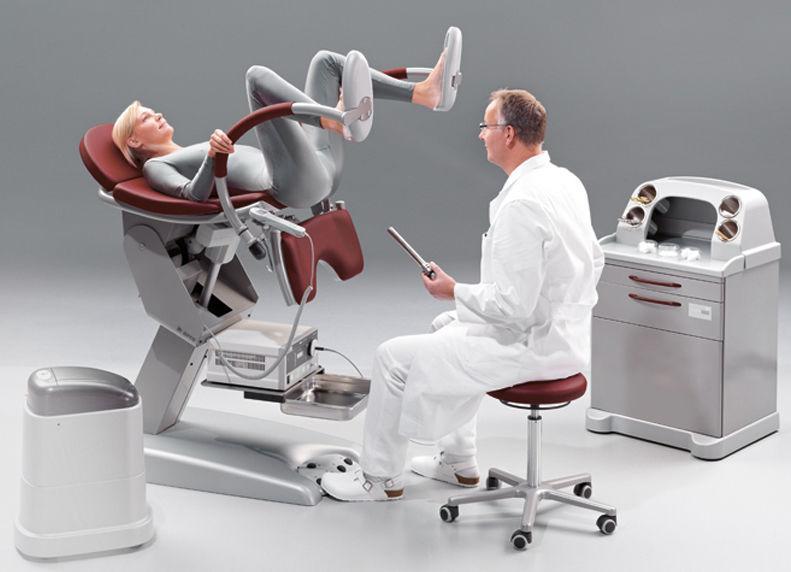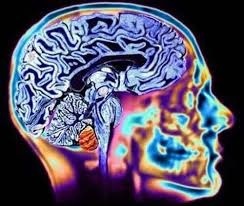Anoscopy: what is it, contraindications and preparation for the procedure
Anoscopy helps to detect pathological processes in the structure of the mucous membrane of the anus and rectum. Thanks to a visual examination, the shape, size, location of the formations are determined, which makes it possible to decide on the use of additional examinations and the appointment of treatment. In this article, we will analyze in detail what anoscopy is, indications, contraindications and how to prepare for the procedure.

Anoscopy: what is it?
Content
- 1 Anoscopy: basic characteristics
- 2 What is anoscopy used for?
- 3 Indications for anoscopy
- 4 Contraindications
- 5 Preparing for the procedure
-
6 Procedure for the procedure
- 6.1 Palpation
-
7 Anoscopy: how is it done?
- 7.1 Videoanoscopy
- 8 Complications
Anoscopy: basic characteristics
Anoscopy is a method of examining the inner surface of the rectum using a special device equipped with illumination. The doctor can examine 15-20 cm of the rectum. This method is used for the symptoms of hemorrhoids, tumor processes and adhesions. With the use of an anoscope, a detailed examination of the rectum is performed, it is possible to identify pathologies in the first stages.
Anoscopy is often used as a primary examination. Based on the results of the procedure, the doctor decides on the use of other diagnostic methods, for example, colonoscopy, rectoscopy. Finger examination in combination with anoscopy is intended not only to determine the character pathological processes, detection of diseases with an acute course, but also to clarify indications for other methods survey.
An anoscope, a metal tube, is used to examine the inner surface of the intestine. This device is reusable. There are also disposable devices made of plastic. The diameter of the anoscope is no more than 2 cm. The presence of a mandrel (removable part) allows the procedure to be carried out without discomfort for the patient.

Anoscope
The tube is supported by a handle at an angle of 90 degrees or more. There is a lighting device inside the handle, if necessary, additional tools are passed through it.
What is anoscopy used for?
This procedure is considered one of the most popular in proctology, as it allows you to obtain accurate examination results and perform various manipulations. Anoscopy is used for the following purposes:
- Checking the structure of the mucosa.
- Clarification or refutation of an already made diagnosis.
- Taking analyzes from the surface of the mucous membrane, microscopic areas of tissue.
- The introduction of drugs directly into the mucous membrane.
- Minimally invasive surgery.
Using the capabilities of anoscopy, doctors conduct an examination, in which the condition of the mucous membrane is assessed. As a result, it is possible to distinguish the first signs of Crohn's disease, diagnose polyps of the minimum size, hemorrhoids.

Crohn's disease
When using anoscopy, doctors are able to detect, clarify the location and size of the following anomalies:
- Rectal fistula.
- Tumors.
- Cracks.
- Condylomas.
Along with sigmoidoscopy and colonoscopy, anoscopy allows you to take smears for research in laboratory conditions. Anoscopy is included in the list of methods with which you can take tissue fragments from pathological areas for histological analysis. Rectoscopy and colonoscopy are necessary for examining the distant parts of the large intestine. Examination of the outlet can only be performed using anoscopy.
This method is used not only for examination, but also for the implementation of therapeutic measures. With the help of an anoscope, a drug can be injected into the mucous membrane almost painlessly for the patient. As a result, the active substance immediately enters the affected tissues. Anoscopy is used in the implementation of sclerotherapy, coagulation, removal of polyps.
Indications for anoscopy
If a person comes to see a coloproctologist, in most cases anoscopy is prescribed. According to its results, doctors make a preliminary diagnosis, select additional examination methods. Also, this procedure is shown with such deviations:
- Pain syndrome in the anus or rectum, the causes of which are not clear.
- Repeated discharge of serous fluid, blood, or pus.
- Stool disorders, including diarrhea, constipation.
- The likelihood of the appearance of hemorrhoids.
- It is assumed that the patient has a mucosal infection.

If these signs appear, you should consult your doctor.
Contraindications
With the exception of acute pathological processes, in which, during the introduction of foreign bodies into the posterior passage may cause rupture of the intestine, injury to the tumor, anoscopy does not have absolute contraindications. This procedure is carried out without the patient feeling uncomfortable.

During anoscopy, anesthesia is rarely used if the patient does not have psychogenic disorders
There are a number of cases in which it is not desirable to carry out anoscopy. In such situations, this procedure is postponed; if urgently needed, it is carried out with additional anesthesia.
The main contraindications:
- Excessive narrowing of the rectum as a result of exposure to irritants, adhesions.
- Infectious processes that caused inflammation of the mucous membrane, thrombosis due to the proliferation of hemorrhoids, paraproctitis.
- Large tumors that provoked mucosal stenosis.
- Burns, injuries.
- Anal fissure during an exacerbation of the chronic form of the disease.
Preparing for the procedure
To perform anoscopy without discomfort and with maximum efficiency, the rectum is cleaned of feces. Usually, 2 enemas are performed for this, the volume of which does not exceed 1.5 liters. An enema must be placed in the evening on the eve of the day for which the examination is scheduled. In the morning, 2 enemas are performed. You can not do it later than 2 hours before the anoscopy.
You can prepare for the examination without the use of enemas. For this, the following drugs are taken:
- Fortrans;
- Fleet soda;
- Microlax.
It is required not only to qualitatively cleanse the intestines, but also to abandon products that provoke increased gas formation for a while. It is advisable not to consume sour juices, cabbage, fatty foods, legumes for 2-3 days before the procedure. Correction of nutrition on the eve of the examination is important, however, it is not necessary to change the menu on the day of the examination, since the morning meal will not affect the results of anoscopy.

Skip for a while from foods that cause gassing
Procedure for the procedure
When examining the state of the mucous membrane using anoscopy, there are no difficulties either for the doctor or for the patient. The procedure is carried out in one of 3 positions:
- Lying on your back. This position is selected only if there is a gynecological chair.
- Kneeling with an emphasis on the elbows.
- On a couch on the left side. When choosing this position, the doctor will ask the patient to pull the knees up to the chest.

Proctology examination chair
Palpation
To improve the effectiveness of anoscopy, palpation is often performed before this procedure. Examination and assessment of the condition of the mucous membrane, sacrum, adjacent tissues allows you to identify additional details in order to compose a complete clinical picture.
Before palpation, the proctologist puts on gloves, processes them with a moisturizing gel, and inserts a finger into the anus. The specialist's tasks include detecting nodes, assessing their density, and determining the state of muscle tissue. As a result, the doctor will be able to clarify the stage, determine the neglect of the pathological process.
Anoscopy: how is it done?
Before the introduction of the anoscope, the tip is treated with a special oil or gel, which reduces the risk of discomfort in the patient. Then the device is gently inserted into the anus and moves along the rectum. After reaching the required depth, a mandrel is removed from the device (a rod that maintains the shape of the structure during insertion). The doctor examines the mucous membrane. Taking into account the information received, a decision is made to conduct additional examination methods, and further treatment is prescribed.
The duration of the procedure depends on the presence and characteristics of the pathological process in the rectum, but this indicator rarely exceeds 20 minutes. The term for anoscopy is increased if not only examination is required, but also the taking of tissue sections for further analysis, as well as, if necessary, partially or completely eliminate previously detected polyps.
If additional manipulations are required, the patient is offered one of the methods of pain relief.
Table 1. Pain relief methods
| Method | Features of the |
|---|---|
| Application of anesthetic | There are relatively few pain receptors on the mucosa. The appearance of unpleasant sensations can only be provoked by minimally invasive interventions, including taking tissue samples for analysis or cauterizing small formations. The patient is notified of the need for these manipulations in advance, while an anesthetic drug selected by the doctor is used. |
| Sedation | People who are worried at a doctor's appointment, cannot overcome increased nervous excitement, often decide to use sedatives, for example, Profol, Midazolam. These hypnotics allow you to carry out the procedure without moral discomfort. Also, the listed funds help to correctly respond to the doctor's instructions during the procedure. |
After examination, the anoscope is removed from the rectum, the doctor assesses the structure and condition of the mucosal folds. Using this examination method, you can identify any deviations in the structure of the lower part of the thick intestines, including hemorrhoids, condylomas of various shapes, tumors, polyps, cracks, inflammatory processes. Anoscopy allows you to determine the type, location, severity of the pathological process in the segment of the rectum, located on the border with the anus.
Videoanoscopy
An effective examination method that allows you to record video when the anoscope is inserted into the anus. For this, an optical device is built into the tube of the device. The resulting image is displayed on the monitor. Usually, the resulting record is saved and given to the patient at the end of the procedure. You can not only record the survey, but also take photographs.
Complications
Before the appointment of anoscopy, a preliminary assessment of possible risks is carried out. In most cases, this procedure is carried out for people who have no contraindications. The likelihood of complications arises when it is necessary to take a sample of the mucous membrane for analysis. If a specialist makes an inaccurate movement, there is a risk of injury to the mucous membrane, followed by bleeding.
If the proctologist is careless or inexperienced, there is a risk of intestinal rupture. This complication is extremely rare.

To avoid the onset of unpleasant consequences, you must contact only experienced, proven specialists.
Anoscopy can be performed if indicated, as well as for prophylactic purposes. Proctologists are advised to annually undergo this diagnostic examination for people aged 40 and more, since with regular examination of the mucous membrane, malignant tumors can be detected in a timely manner.



